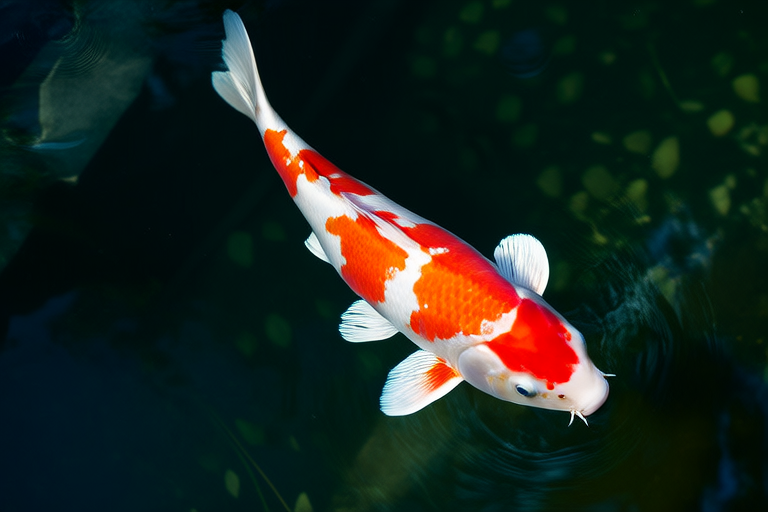Koi Care 101: Expert Tips for Beginners
Welcome to Koi Care 101! This comprehensive guide will provide you with all the essential information needed to care for your koi fish properly. From setting up the perfect pond to maintaining water quality, feeding, and understanding common health issues, we’ll cover it all. Whether you’re a first-time koi owner or looking to enhance your existing knowledge, this guide will help ensure your koi live long, healthy lives.
Setting Up the Ideal Pond
The first step in koi care is creating an environment that mimics their natural habitat. A well-designed pond provides shelter, oxygen, and protection from predators. Here’s what you need to consider:
- Pond Size: Ensure the pond is large enough to accommodate the number of koi you plan to keep. As a rule of thumb, each koi requires at least 200 gallons of water.
- Depth: Aim for a depth of at least 3 feet (91 cm) to prevent freezing in winter and overheating in summer.
- Oxygenation: Install a pump and filter system to circulate water and maintain high oxygen levels. A waterfall or fountain also helps aerate the water.
- Sunlight: While koi enjoy basking in the sun, too much direct sunlight can lead to algae growth. Plant aquatic plants or use floating plants to provide shade.
- Shelter: Incorporate rocks, plants, and caves to give your koi places to hide and feel secure.
Maintaining Water Quality
Water quality is crucial for the health of your koi. Regular testing and maintenance can prevent many health issues:
- Test Water Regularly: Use test kits to monitor pH, ammonia, nitrite, and nitrate levels. The ideal pH range is between 7.2 and 8.0.
- Aerate the Water: Oxygen is vital for koi health. Ensure proper circulation with pumps and filters.
- Change Water Periodically: Perform partial water changes every two weeks, especially during warmer months when waste builds up faster.
- Control Algae Growth: Limit sunlight exposure, add UV sterilizers, and introduce algae-eating organisms like snails.
Appropriate Feeding Practices
Feeding your koi correctly is key to their well-being. Overfeeding can lead to poor water quality and health problems, while underfeeding can cause malnutrition.
- Types of Food: Choose high-quality pellets formulated for koi. These should be rich in protein and include vitamins and minerals.
- Amount to Feed: Feed your koi only what they can consume within five minutes. Adjust the quantity based on the number of fish and water temperature.
- Frequency: Feed adult koi twice daily, once in the morning and once in the evening. Reduce feeding frequency to once a day in colder weather when their metabolism slows down.
- Variety: Occasionally supplement their diet with treats like boiled peas, shrimp, and worms to provide additional nutrients.
Common Health Issues and Prevention
Despite your best efforts, koi may still encounter health problems. Early detection and treatment are crucial for recovery:
- Fungus: Fungal infections often appear as white or grey patches on the fish’s body. Maintain good water quality and treat with antifungal medications if necessary.
- Bacteria: Bacterial infections can cause redness, ulcers, or fin rot. Keep the pond clean and use antibiotics under veterinary guidance.
- Parasites: Look out for white spots (Ichthyophthirius multifiliis), which require special treatments.
- Swim Bladder Disorder: This condition causes difficulty swimming upright. It can result from overfeeding or poor water quality. Avoid feeding before bedtime and improve water conditions.
Seasonal Care Tips
As seasons change, so do the needs of your koi. Adapting your care routine ensures they remain healthy year-round:
Spring
In spring, temperatures rise, and koi become more active:
- Thawing: Gradually increase feeding as the water warms up.
- Cleaning: Remove debris accumulated over winter and check equipment for damage.
- Planting: Add new aquatic plants to provide shade and oxygen.
Summer
During summer, the warmest season, focus on keeping the pond cool:
- Shade: Provide plenty of shade to prevent excessive algae growth and heat stress.
- Aeration: Increase aeration to prevent low oxygen levels due to higher temperatures.
- Feeding: Continue feeding twice daily but reduce quantities if the water becomes too warm.
Fall
Prepare for cooler temperatures in fall:
- Reducing Feeding: Decrease the frequency and amount of food as temperatures drop.
- Cleaning: Clean the pond thoroughly before winter sets in.
- Insulation: Consider adding insulation to the pond bottom to protect against sudden temperature drops.
Winter
During winter, koi become less active:
- Feeding: Stop feeding entirely when water temperatures drop below 40°F (4°C).
- Protection: Ensure the pond does not freeze completely. Use a de-icer or heater if necessary.
- Monitoring: Check on the pond regularly to ensure the water remains free of ice.
Regular Monitoring and Adaptation
Consistent observation is critical for maintaining the health of your koi. Pay attention to their behavior, appearance, and the overall condition of the pond. Adapt your care routine as needed based on environmental changes and the specific needs of your fish.
Remember, koi are sensitive to their surroundings, and small adjustments can make a big difference. By staying vigilant and proactive, you can provide a safe, comfortable home for your beloved pets.
Conclusion
Caring for koi is both rewarding and challenging. With the right knowledge and tools, you can create a thriving environment for these beautiful creatures. Always prioritize their health by maintaining optimal water quality, providing nutritious food, and addressing any issues promptly. Happy koi keeping!
